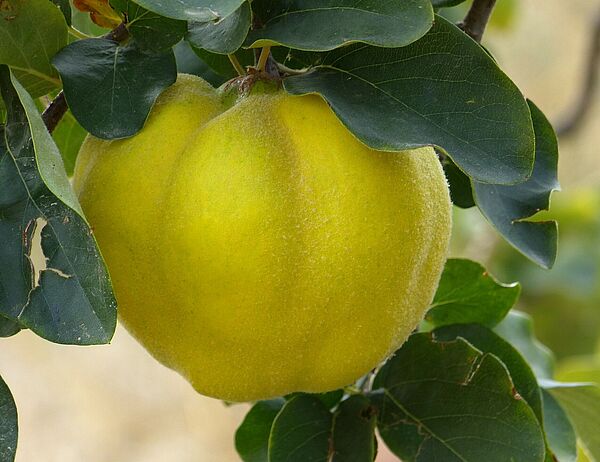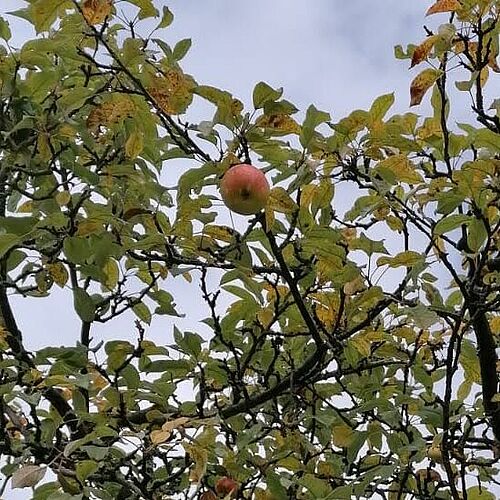Half apple, half pear? The quince is closely related to the apple and pear and, like the latter, belongs to the rose family. In ancient times, the fruits of the quince were considered a symbol of love and fertility by numerous peoples. In the 9th century, the quince came to Central Europe, where it was initially planted mainly in warm wine-growing regions.
The genus quince (Cydonia) is represented by only one species, but two varieties are distinguished: the apple-shaped and the more pear-shaped quince. Characteristic of the quince is the dense, white, downy felt that covers the skin. The quince is harvested in October and November. However, the fruit is too hard to eat raw. The reason for this is the stone cells in the flesh.
Quinces are very suitable for making jelly, jam, juice, distillates and liqueurs. Most famous is quince bread (also quince bacon): a quince puree preserved by drying. In addition to these numerous uses, the quince also scores as a feast for the eyes. Its appearance in spring (large single flowers late in May) and autumn with the fruits, for example, delights the visitors of our botanical garden...

Speaking of which! We owe the name marmalade to the quince: "In ancient Greece, a quince puree was made from the quince (then called melon) together with honey (then called meli), the melimelon. In the Middle Ages, the Portuguese adopted the tried-and-true process and called the puree, which was especially popular with seafarers (because it was durable), marmelada." (Hutter 2014, 35).
Source: Hutter, Claus-Peter (2014): Obstwiesen. Ein Naturparadies neu entdecken. Stuttgart: Kosmos Verlag.

Apples are the most popular fruit in Germany: "According to the National Consumption Study II, men consume 107 grams of apple per day, women 118 grams."[1] From Lake Constance fruit to the Alte Land near Hamburg - numerous apple varieties are grown throughout Germany. The harvest time for some varieties is October. We have taken this as the current occasion to offer you and yours a few suggestions on the subject of apples.
Have fun reading, learning, discovering and trying!
October tip on the subject of apple
[1] MRI (Hrsg.) (2016): Geballte Gesundheit, Knackiger Genuss. Der Apfel. URL: https://www.mri.bund.de/fileadmin/MRI/Verbrauchermedien/MRI-Flyer-Apfel-08-2016_web.pdf (Stand: 11.10.21)